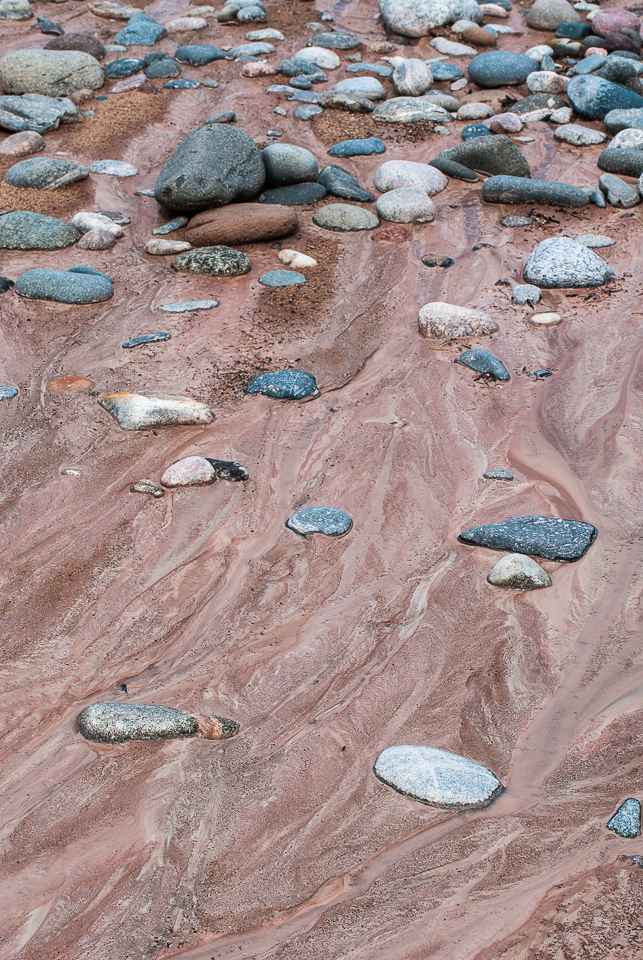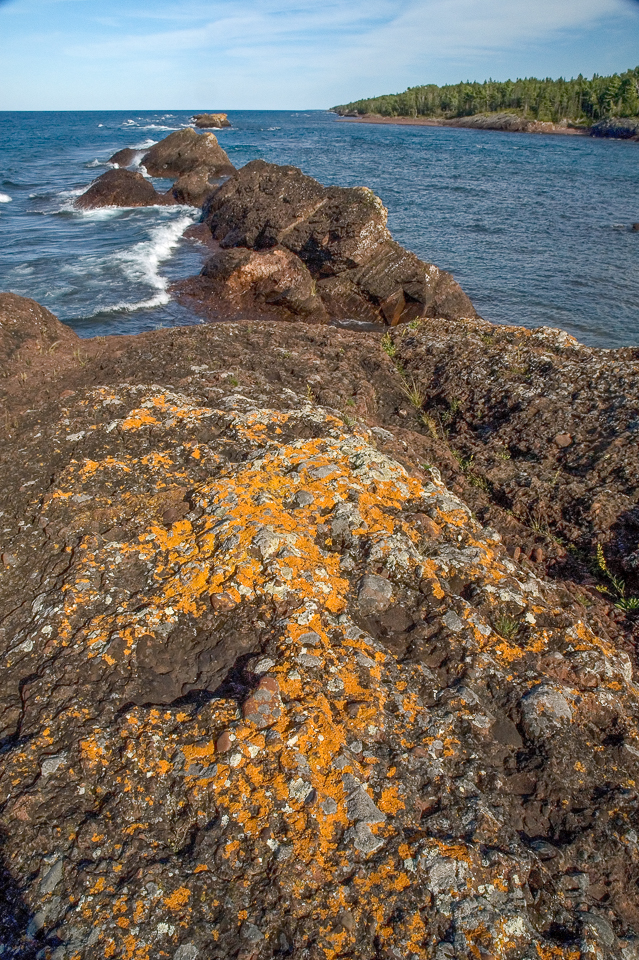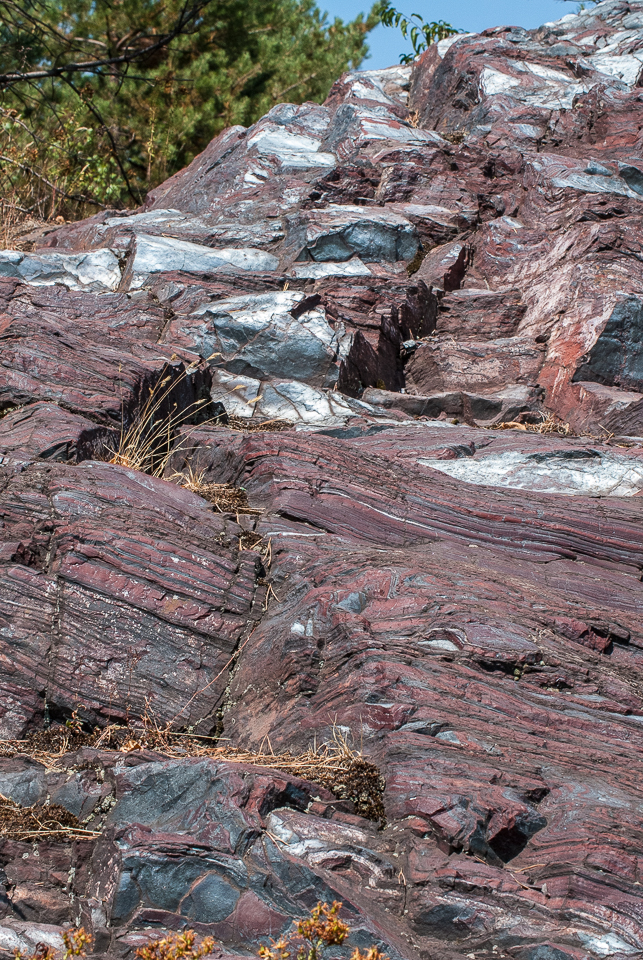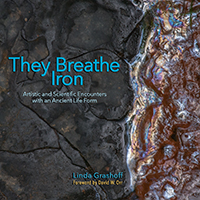From the Archives of 2007—4
March 23, 2021
In August 2007 my husband and I took one of our many trips to Michigan’s Upper Peninsula. We stayed a few nights in Grand Marais and stopped for a few hours outside Ishpeming on our way to Copper Harbor.
1 One of the things I love about the U.P. is how few people you see outside the towns. (This is the guy I went with.)
2 This is the Devil’s Logslide, also shown in the previous photograph, outside Grand Marais.
3 The sand of the log-slide dunes comes in colors that range through pink and orange to brown.
4 As the dunes slide little by little into Lake Superior, they uncover embedded rocks.
5 As water runs down the dunes, it creates interesting patterns.
6 Without any clue to scale this could be a gorge in the landscape large enough for a boat. In this case, it would have to be a tiny boat. The gorge was never more than a foot across.
7 I wonder how the zig-zag patterns form.
8 The sand designs were endlessly fascinating.
9 In some places the contrast between the base sand layer and the washed-down layer was striking.
10 I wonder what it would be like to stand in the rain and watch these forms being created.
11 Farther west and north, outside Copper Harbor, the look of the landscape is completely different.
12 For one thing, large rocks line and protrude into the lake.
13 The rocks are home to lichens and sparsely scattered plants.
14 Although they calm down by the time they reach the small coves, Lake Superior’s waves can be more vigorous farther out than they are near Grand Marais.
15 There seem to be at least three kinds of orange lichen. My best guess is that these specimens are Xanthoria parietina. YouTube has a nice short-but-informative video about X. parietina, showing its growth on a tree trunk.
16 Most of the shoreline around Copper Harbor is stones like this.
17 This piece of driftwood, worse for wear, washed up on the cobble beach.
18 The spot we visited near Ishpeming is called Jasper Knob.
19 Jasper Knob is part of the Negaunee Iron Formation.
20 It is a banded iron formation. The layers consist of jasper (the red rock) and hematite (the silvery rock).
21 I’m delighted to tell you that some biogeologists believe that banded iron formations were formed by my old pals, the iron bacteria.
This entry was posted on March 23, 2021 by Linda Grashoff. It was filed under Nature, Photography and was tagged with banded iron formation, Copper Harbor, Devil's Log Slide, Jasper Knob, Lake Superior, Nagaunee Iron Formation, Upper Peninsula.
24 responses
It's a pleasure to read your comments. Cancel reply
This site uses Akismet to reduce spam. Learn how your comment data is processed.






















Linda – These are so beautiful that I am going to save this post. My cousin was engaged to a girl from Grand Marais many decades ago, but they decided not to marry because she would not leave Grand Marais and he did not want to live that far from his family in Grand Rapids (southwest lower peninsula).
I love the colors and the patterns.
LikeLike
March 23, 2021 at 9:23 PM
Thanks, Sandi. Color and pattern are what get me the most—to the extent that I usually forget to take an overall photo for context.
LikeLike
March 23, 2021 at 9:33 PM
Wonderful trip and photo’s, Linda. Those sand patterns are amazing (nr’s 4-10) and the banded iron formations are also beautiful! (20-21). Thanks and see you!
LikeLike
March 24, 2021 at 2:56 AM
Thank you, Harrie. I hope to go back to these places some day again. I wonder if I would find anything new to photograph.
LikeLike
March 24, 2021 at 8:28 AM
Beautiful place, beautiful pictures – particularly like #4. 🙂
LikeLike
March 24, 2021 at 4:23 AM
Thank you, Adrian. I’m glad you like them. Does the geologist in you have anything to say about banded iron formations?
LikeLike
March 24, 2021 at 8:43 AM
Well I’ve heard of BIFs but really they weren’t my speciality, I was more into ophiolite complexes, slices of oceanic crust thrust up onto continental margins – LOL! but all of that’s so long ago now that I recall little – and especially so with all the vast birds/birding interests I had 1975-2003.
LikeLike
March 24, 2021 at 10:59 AM
I looked up ophiolite complex and found a whole new world I am ignorant about. Thanks, Adrian.
LikeLike
March 24, 2021 at 3:36 PM
Brilliant pictures once again. I would love to visit this place.
LikeLike
March 24, 2021 at 4:40 AM
Thanks. I thought of you, Jessica, as I was putting this post together. Yes, you would find a lot to your liking in the U.P.
LikeLiked by 1 person
March 24, 2021 at 8:46 AM
Love the colors of the rocks and the beautiful striations! You did it again.
LikeLike
March 24, 2021 at 8:07 AM
Thanks, Clare. I took so many photographs during that trip. It was hard to whittle them down for this post. And yet I wanted more.
LikeLike
March 24, 2021 at 9:38 AM
Easy to see how this was your sort of place. I’ve long wanted to go to the Upper Peninsula but haven’t yet made it there. Relatively uninhabited, as you said, it nevertheless served as the setting for the book and 1959 movie Anatomy of a Murder.
I like those reverse bas-relief sand designs in #7–10. You’ve caught a great sense of circular movement in #21. That little cucumber beetle in #16, unexpected, rounded like the stones but unlike them alive, makes a great contrast.
LikeLike
March 24, 2021 at 9:10 AM
I hope you make it to the U.P. some day, Steve. It’s a nature photographer’s paradise. . . . A cucumber beetle, eh? I didn’t know. Thanks.
LikeLike
March 24, 2021 at 10:53 AM
At least that’s what I take it to be:
http://entnemdept.ufl.edu/creatures/veg/bean/spotted_cucumber_beetle.htm
LikeLike
March 24, 2021 at 7:22 PM
Sure looks like it to me. There is little agriculture in the U.P., though. Maybe this one is a tourist.
LikeLike
March 24, 2021 at 7:49 PM
Thank you for taking us on your trip! Beautiful place. I would love to visit in person someday.
LikeLike
March 24, 2021 at 2:34 PM
You’re closer than we are. Just go up Wisconsin and hang a right. It is beautiful. Feels like a different world.
LikeLike
March 24, 2021 at 3:30 PM
such a beautiful place, full of spectacular details as you portray so beautifully here
LikeLike
March 24, 2021 at 5:39 PM
Thank you, Mark. You’ve probably spent more time up there than I have.
LikeLike
March 24, 2021 at 7:51 PM
This post was buried (like many others, unfortunately) in my email. Sorry! My first thought is that your unique vision has been alive for a long time – I’m sure a lot longer than this but it’s fun to see the Linda-esque images here and to imagine you taking them while on vacation. it’s one thing to succeed at your kind of photography on familiar territory and another to succeed in expressing your own vision when away from home. I love #4, the warm/cool colors, and the different hardnesses of the elements. Love the curve of the composition in #5, too. #7 – yes, why does the flow zigzag? Crazy! #9 & #10 are particularly beautiful abstracts. #12 makes me curious about the plants. #15 is another great composition – really nice! #16 is fun, I’m glad you caught that little guy. Then you slowly introduce the iron/jasper formations and end with a bang – what a stunning image that last one is! The hematite is very pretty in #20 – that had to be a little difficult to photograph. I’m glad you’re delving into the archives. 🙂
LikeLike
April 15, 2021 at 5:24 PM
I wonder if it’s hard to really see your own style. You say “Linda-esque,” but I’m not sure what that is besides a penchant to go for the abstract. I took soooo many bad photos on this vacation; it was embarrassing to go through them. This post includes many newly cropped images. I’m pleased that you enjoyed them. I don’t remember the hematite being difficult to photograph; that’s probably because I was lucky. This was before I learned to check the histograms. I still have all the photographs shot in Ohio in 2007 to go. They will take several posts to get through.
LikeLike
April 15, 2021 at 8:17 PM
Hi Linda. What a wonderful visual journey over part of the Upper Peninsula—with your comments as a guide. Thank you. Glorious photography, as usual.
LikeLiked by 1 person
April 17, 2021 at 12:05 PM
Thanks, Grover. I’d love to go back, but could my now-14-years-older body take all that climbing around? Not sure.
LikeLike
April 17, 2021 at 2:23 PM